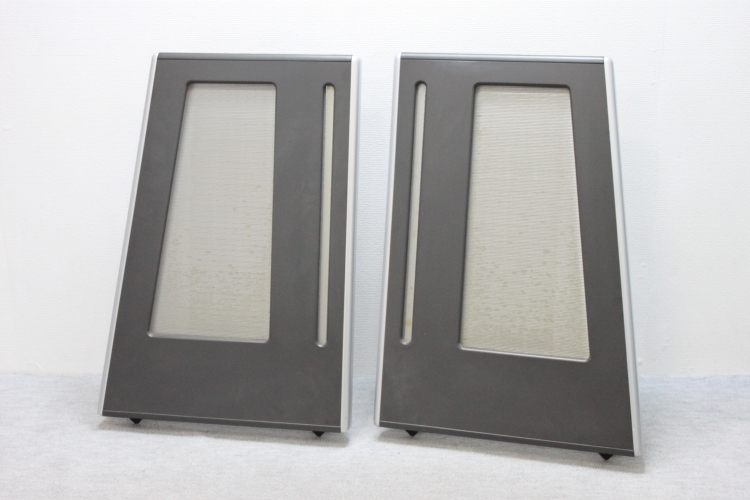
Detailed Info about the Apogee Stage
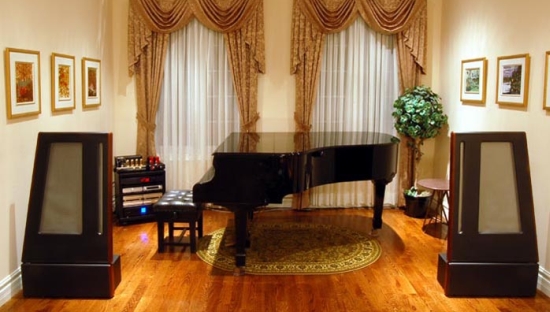
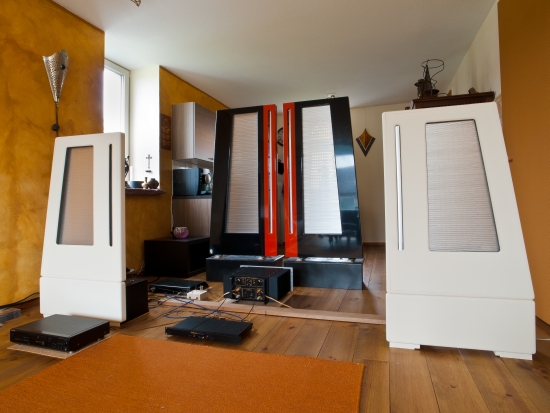
Above: at Toines place along with the red and black Duetta Signatures that still linger around in my quarters.
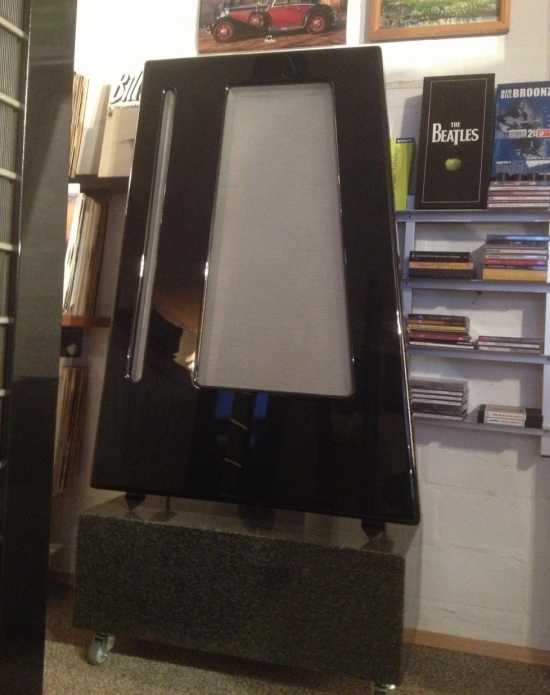
Classy high gloss black – my favorite look for these speakers
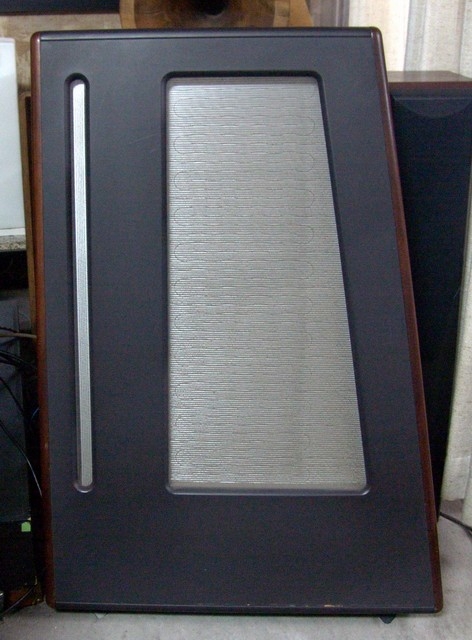
Wood trim option
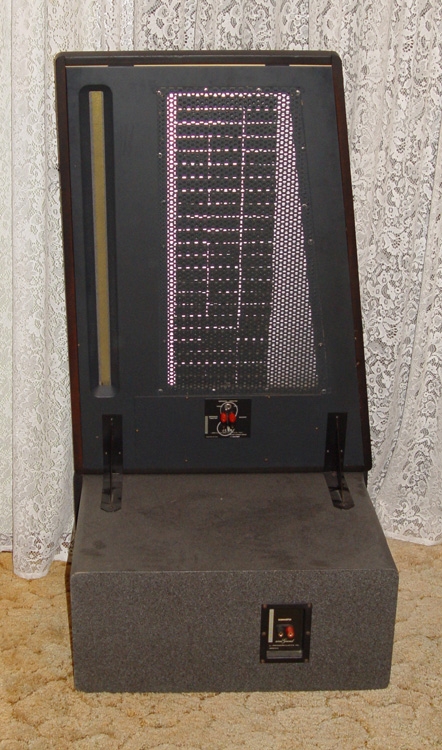
Stage on top of the optional subwoofer to combine into a Mini Grand
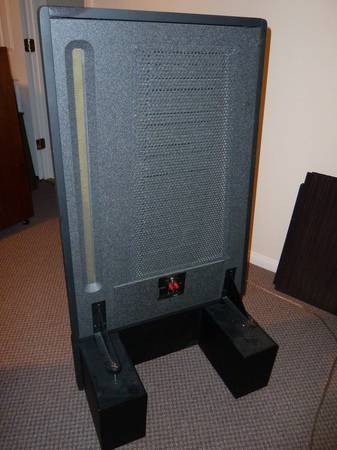
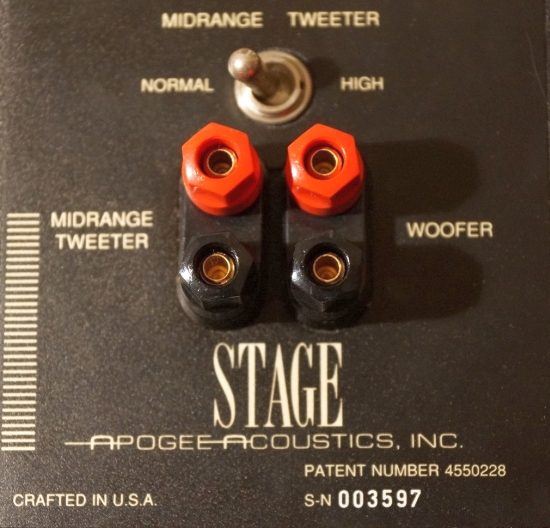
Interesting homemade Stands
Stage with homemade stands in the same wood as the trim on the speakers. The floor plate is metal with SoundCare superspikes – very classy
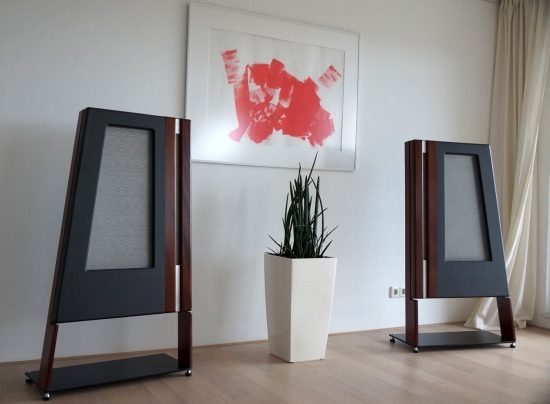
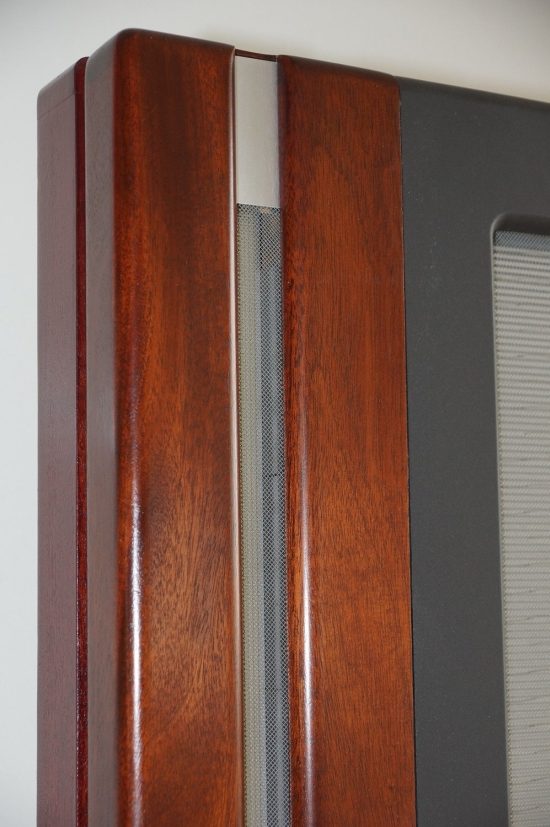
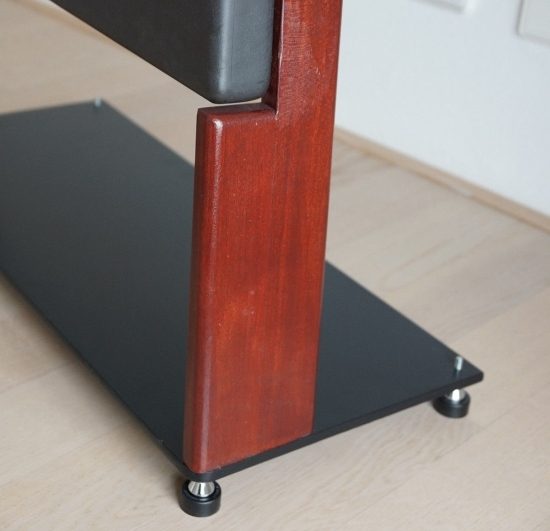
Info
The Stage was the smallest and cheapest Apogee speaker when it appeared in the middle of 1990.
The drive units on the Stage used Mylar as the backing material, as opposed to Kapton. The woofer’s mylar foil deviates from all other Apogees by having aluminum conductors on both sides of the foil. These dual sandwich etched ribbons yielded a much-improved sensitivity. Impedance was still relatively low at 3 ohms but also in part thanks to more powerful magnets for the woofer driver, the Stage was considerably easier to drive than any previous Apogees.
The original ribbon tweeter was a double laminate of aluminum and Mylar, with 3 segments on the front and 3 on the back. This was later changed to a single-sided, 6-element etched Kapton ribbon around 1991, which seems to be exactly the same ribbon as used for the Centaurus.
According to someone who used to work at Apogee, the tweeter was redesigned from double laminate to single as heat problems over time could cause a front to back short. The failure rate was small, presumably, it would only be caused by playing at very high levels for a considerable time.
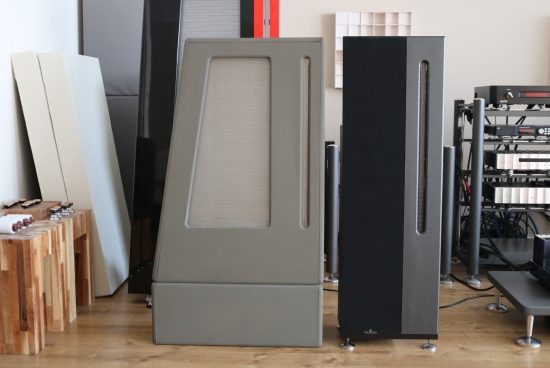
The Centaurs are the same height as the Stage + Pedestal. One could ask why include the Pedestal? Why not simply make the speakers’ baffle a little longer? I thought it might be to aid WAF when leaving out the pedestals, but due to the way that the speaker’s feet are constructed, they can only be used with the pedestals.
The Stage is a very small speaker (in Apogee terms) and due to the way that its feet are designed, it must be used with its dedicated pedestal. It also formed the basis for the Mini Grand system with the addition of a subwoofer unit and an active crossover.
Construction
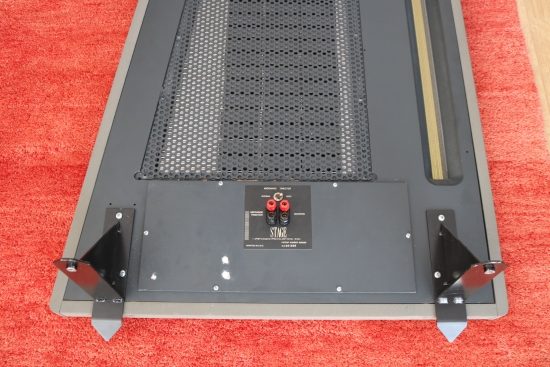
When trying to set them up straight on the floor, the speaker is tilted backward so much that it barely stays put and easily falls over, making the use of its pedestal mandatory unless one comes up with an after-market solution.
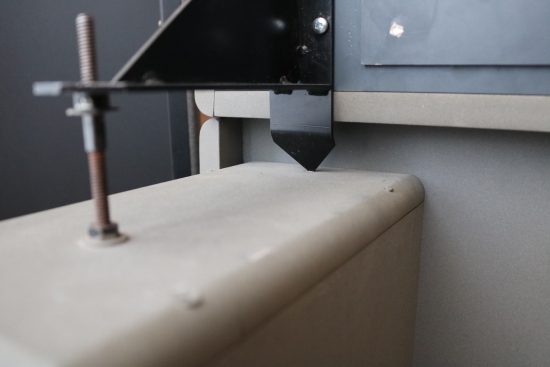
The front side of the speaker is supported by a metal bar that ends in a pointy triangle which stands right on the MDF pedestal.
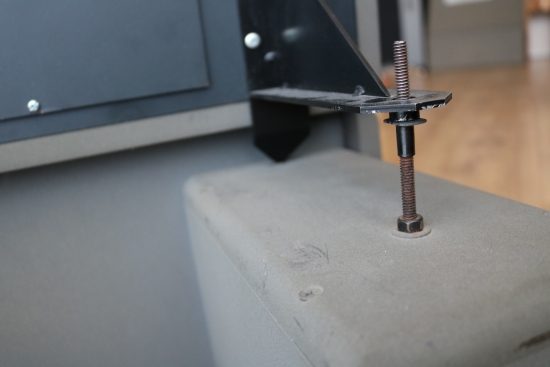
The height can be adjusted to change the speaker’s tilt, then fixed with a nut on top (not shown here)
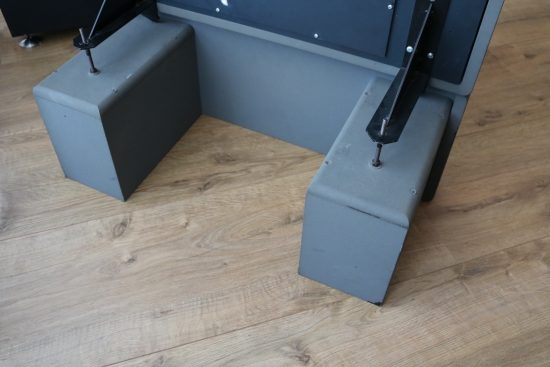
Above: the MDF pedestals are filled with an unspecified very heavy material.
Listening – February 2018
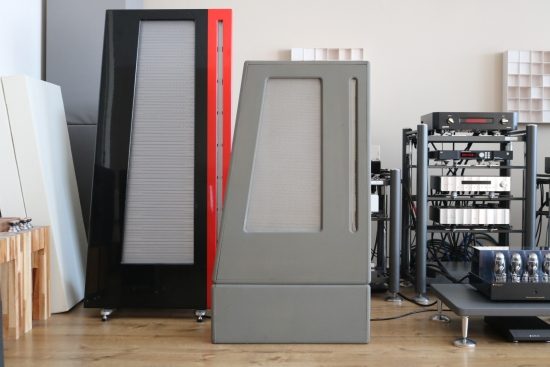
The other day audio buddy JC (aka Meneer Buis) called to say that once again he had some “Doors” in the trunk of his car. He explained that he wanted to buy a pair of Stages and when arriving to get them the owner told him that he also had a pair of original Duetta Signatures as well as a pair of DIS-refurbished ones. Needless to say, JC took all three pairs with him. Because audio buddy JW’s Centaurs were also still at my place, I could now directly compare Duettas to Centaurs and Stages. See the earlier in-depth comparison of original and Graz-refurbished Duettas.
All speakers were used with the same amount of tilting and with their treble switches set to Normal. When having the Stages in the same positions as the Duettas they sounded shut in but moving them 30 cm forward mostly cured this.
I will explain the differences between “official” Graz-refurbished Duettas and DIS-refurbished Duettas elsewhere. For now taking the various Duetta Signature’s overall sound as one and the Centaurs as another, when driven with a PrimaLuna Dialogue Premium with KT150’s, the Stages really do sit somewhere in-between. They have all the linearity and cleanness of the Centaurs with Duetta-like bass quality. They don’t quite go as deep of course, nor does the bass sound as powerful but, likely due to their small size and the double aluminum conductors it is both authoritative as well as very articulate and fast, more immediate than the Duettas and quite a bit like the Centaur’s bass in that respect.
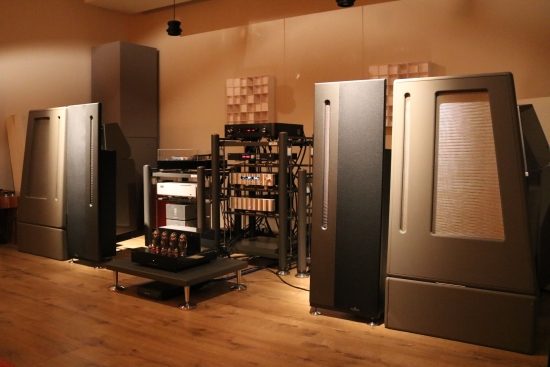
Above and below: naturally this wall-of-Apogee is not how the speakers were listened to, it’s just for show:-)
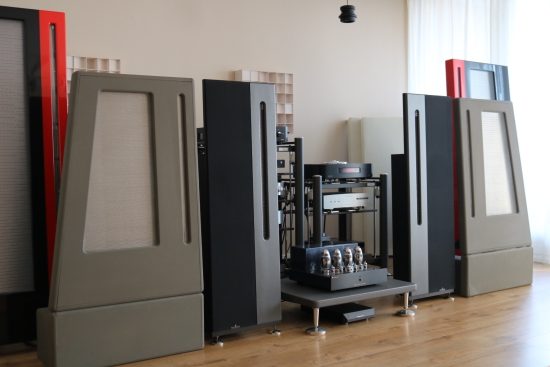
However, although they are absolutely marvelous speakers when compared to virtually any other set of speakers that can be obtained for 900 euro second hand, despite their pedestals, the Stages sound quite a bit smaller than Duettas and they don’t fill the room with sound quite as effortlessly. Also, the Centaurs sound more open and pronounced, with more treble air yet they are not at all sharper or more forward. While you can hear that the same tweeter is employed, the implementation is clearly different, and ultimately I prefer the Centaur’s treble and midrange and definitely prefer the Duetta Signature over the Stage.
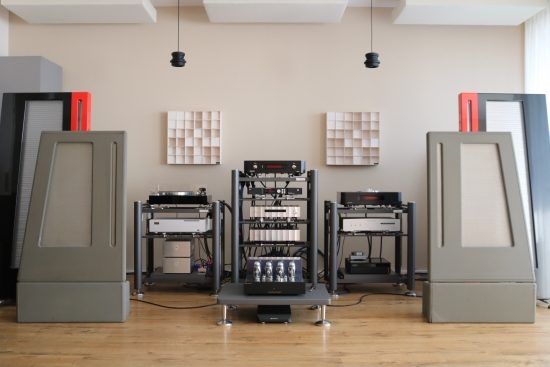
Room considerations
I must note that my listening room is quite large which really aids any speaker and certainly the Centaurs. My audio buddy JW has always had an annoyingly thumpy and boomy bass with the Centaurs yet when set up in my room their bass was really quite surprising and no matter where I placed them, never boomy. In this context, and knowing that dipoles tend to work better in difficult rooms, the Stage might well sound incomparably better than the Centaur if placed in a very narrow room.
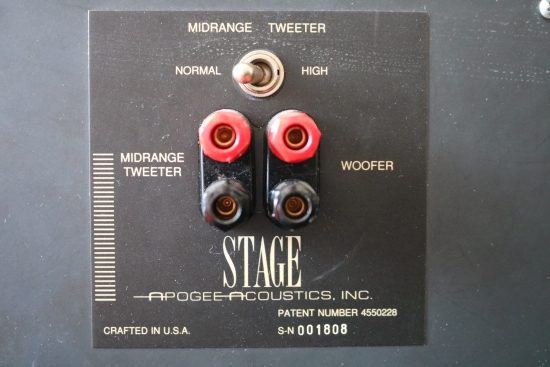
Serial number of pair reviewed: 001808
Specifications
1990-1998
Original Retail $1995
Height 98 cm
Width 67 cm
Impedance 3 ohms
Subs were optional at extra cost
Bass driver
Dual sandwich Aluminium/Mylar (etched)
Midrange/tweeter
26″ ribbon – 3 segment Aluminium/Mylar (double-sided) on first model
Later changed to 6 element etched Kapton in around 1991
Max Sound Level
107 dB peak @ 4 meters using a 50 W amplifier in a 5.5 x 7.6 meter room.
Sensitivity @ 3m
~86dB
Frequency response
40Hz (-3dB) to 20kHz
Crossover frequency
600-700Hz
Suggested amp power
75W (into 8 ohms) 150W (into 4 ohms)
Weight
25kg each
Finishes available
Anthracite with Mahogany side cheeks or White piano lacquer with silver cheeks (additional charge)
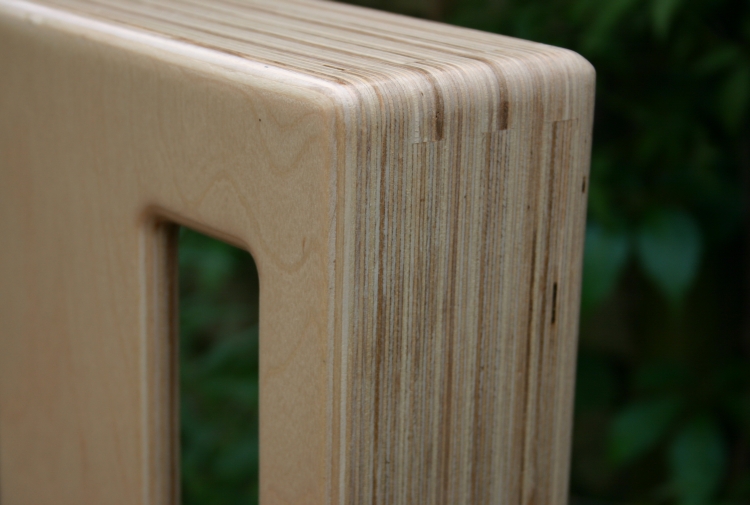
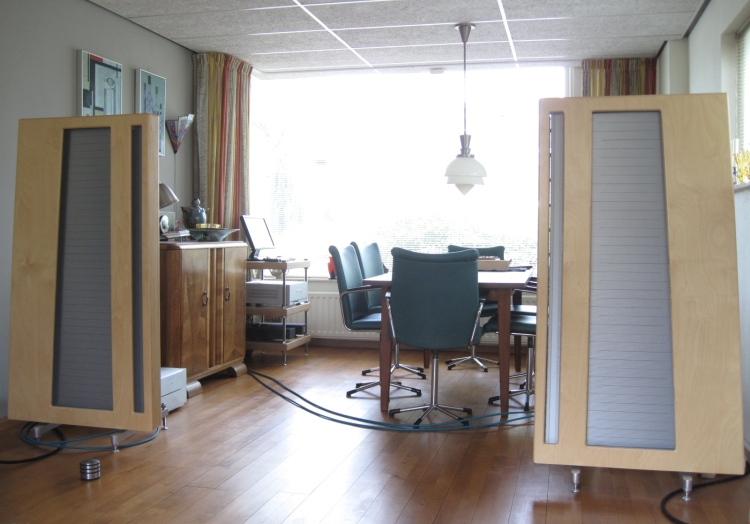
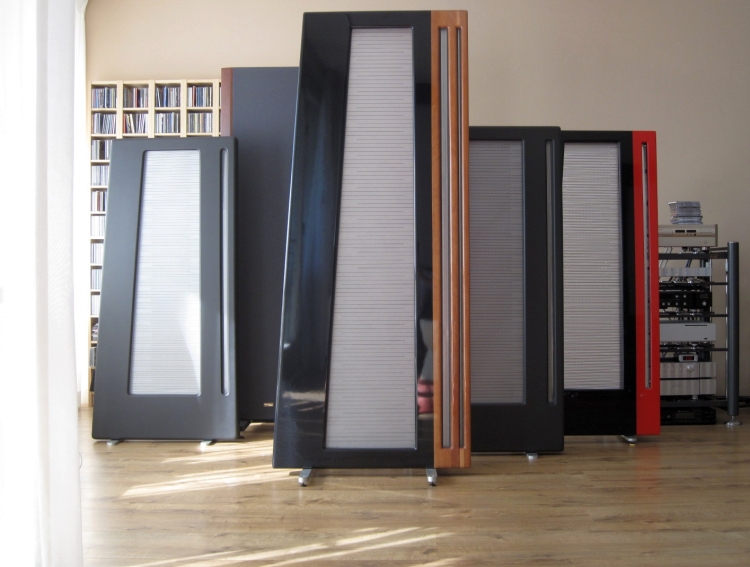
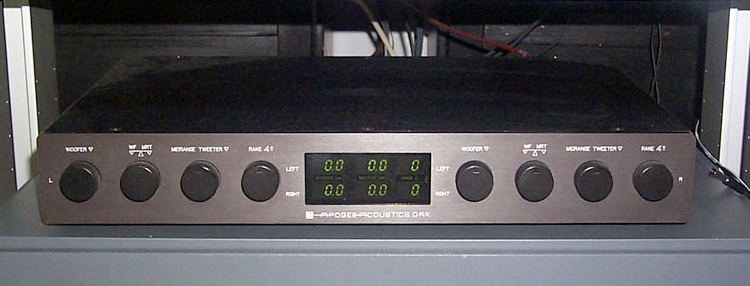
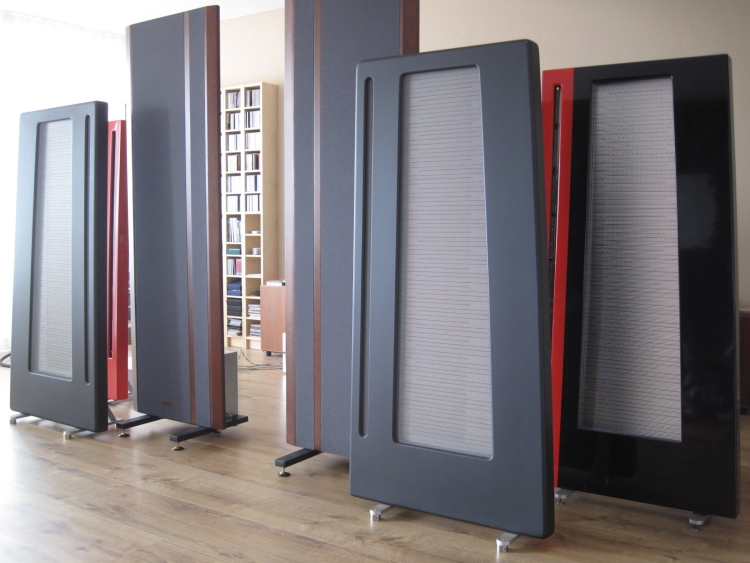
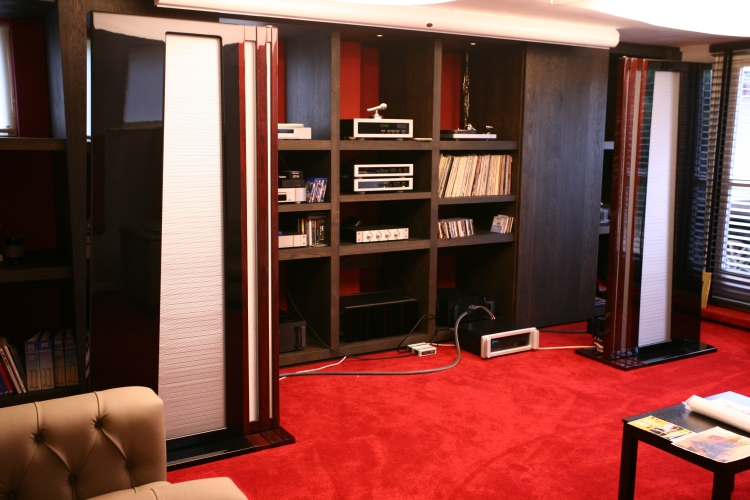
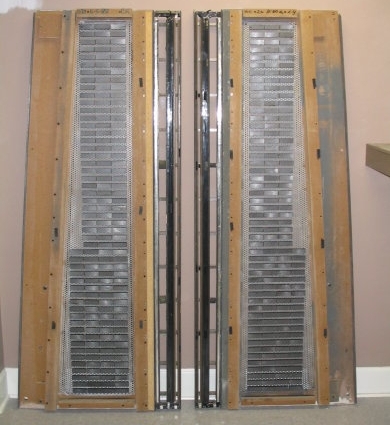
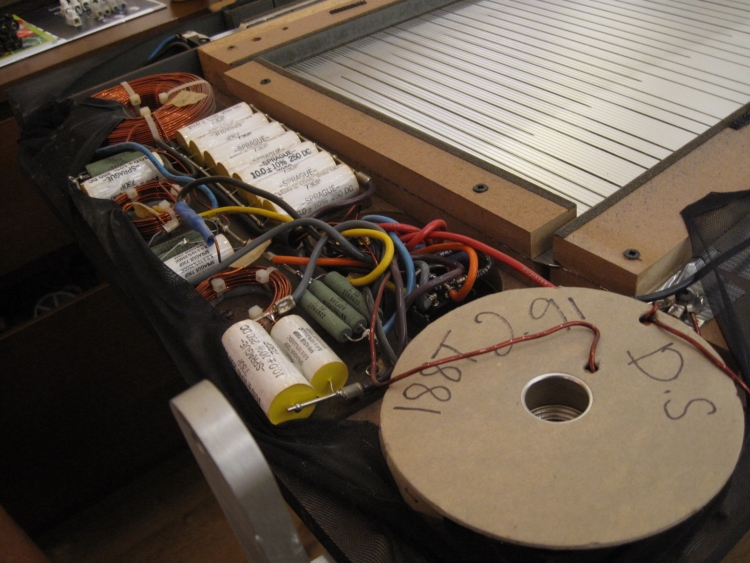
“… they can only be used with the pedestals … the speaker is tilted backwards so much that it barely stays put and easily falls over, making the use of its pedestal mandatory.” This is NOT true. The Stages can be used without stands. In fact they were designed to be used without stands. The speakers’ rake angle is adjusted using the rear spikes. The matching stands were introduced much later than the speakers.
I was always under that impression, too. But the samples I used do not appear to be designed that way since the threads are tightened to the base and sit very loosely in the speaker stands, they cannot be fixated there on their own. like normal spikes. What’s more, these spikes would have to be 15cm or so in length, not very usual for spikes. It is possible that this pair was designed specifically to be used with the stand, or were modified by a previous owner, though. If you have images of a standless pair that shows these spikes then I’d be happy to post them here. If so I will share the email address.
On the Apogee Stage, the rear spikes are about 2″ long and thread through the holes in the back of the “base support brace” (i.e., the foot) to adjust the level of the speaker. You can read about it in the manual:
https://web.archive.org/web/20151004154721fw_/http://apogeespeakers.com/manuals/stage_manual.pdf
Without the spike (called the “leveler’s spike”) it would tilt back too much, as you say. But they were sold with the leveler’s spike, as it is a necessary part of the foot of the speaker.
Also, with your listening test, you were hearing old speakers. Judging from your disparaging comments about the tweeter, there is a good chance that the tweeter ribbon needed to be re-tensioned, which you can read about in the directions for replacing the tweeter ribbon:
https://web.archive.org/web/20151016133855fw_/http://apogeespeakers.com/manuals/stage_midtweeter_replacement.pdf
One should keep in mind that there were slight variations in production over the years; mine do not have a center connection, nor the velcro fasteners for the front panel (the front panel must be removed to re-tension the tweeter). There may be other differences.
Hi AJ, thanks for the extra info, I’ll see what I can add to the review. Indeed, Apogee have issues various revisions and I don’t claim to know it all:-) Re the Stage MRTW sound: yes, loss of tension and other detoriation is always a factor but the MRTW tension in this case was fine. I’ve owned and heard very many Apogees, some old and worn ones, some originals in fine shape, some with replaced ribbons and some entirely refurbished and the way that the MRTWs in the Stages sounded just does not align with any of the other cases, except perhaps partially of the Centaur Major that also sounded darker than the mid-size Centaur. Another pair of Stages had a similar presentation which makes me think this is to do with crossover decisions rather than the ribbons themselves. BTW, a loose MRTW ribbon (even warped ones) can still sound quite pleasant and still very airy and I have no issues with that. Tightening usually has the effect of increasing the attack and forwardness which to me is not the same as airyness or openness per se. I’ve owned the Centaurs, two friends have them and I’ve also heard them in several other occasions but these Centaur MRTWs (which are supposed to be the same as in the Stage) sounds much more airy and open than those in the Stages. Too open for some, actually, and no matter which presentation is preferred, my point is that this is a difference that stands out.
Hello Christiaan,
What Happened to the explanation about the differences between the Graz and Dis refurbishments, or the Clarisys foils for that matter?
Regards,
René
Hi Rene, what do you mean “what happened to…”? You seem to suggest that info went missing?
Does anyone know the dimensions of the stands if I were to make them myself?
Alas, I have no official documentation on this. However, I have had the pedestals here in my room and can tell you they were slightly less tall than the distance between the bottom of the speaker and the start of the bass ribbon. I would estimate they were roughly 25-28 cm tall.
When on the pedestals, the Stage’s total height is the same as that of the Centaur (regular Centaur, not minor/major).
CHI is correct about the spikes. They are about 2” long and would occupy the same threaded hole that the threaded posts on the stands occupy. The top of each spike accepts a #4 Allen key, thus enabling you to precisely adjust rake. Although mine are mini grands, the subs are stored away in boxes. I prefer to run the ribbons full range (and have no desire or space for those extra layers of electronics and wires.
I’d be happy to send photos from my set up if that would be helpful, just tell me how.
And thanks for actively helping to keep interest in these stunning speakers alive!
It’s possible the Stages I had were modified in that respect. I’d be happy to look at and potentially include your pictures. I’ll send a PM.